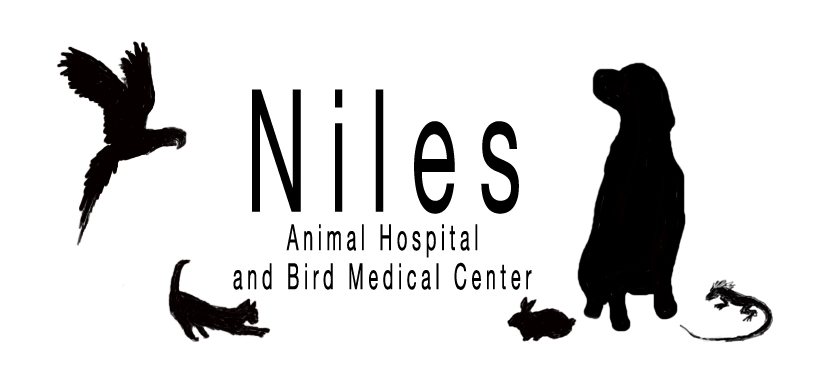As we see a large number of birds at Niles Animal Hospital and Bird Medical Center, I have become quite the expert on bird droppings. I came across this interesting article on the internet where a study was done in England where they were trying to determine which color of car attracted the largest number of bird droppings. (Maybe too much time on their hands?) Anyway it was an intriguing read.
To add my perspective to this. Through the years I have noticed certain things about birds, such as, they seem to be predominately left-footed (evidenced by which foot they hold their food in or reach out to grab something) and also that their favorite color is red (birds who are colored pellet eaters seem to prefer the red ones, followed by orange and green, with purple being the least favorite color). As they do see in color (unlike dogs and cats), color is very important to them. In the study described below, they were trying to determine why the birds preferred to poop on the red cars, suggesting various theories, but based on my experience I think it may be that they JUST LIKE THAT COLOR! Peter S. Sakas DVM
__________________________________________________________________________________
Bright red cars attract more bird droppings than vehicles of any other color, according research from Halfords.
A study recorded the frequency that birds left their mark on cars in five cities around the United Kingdom, and found crimson motors were targeted the most.
Green cars were found to suffer least, followed by silver, while white vehicles escaped more often than black in the analysis of 1,140 cars in Brighton, Glasgow, Leeds, Manchester and Bristol over two consecutive days, to see whether color made a difference to birds.
During the study, drivers were also asked how quickly they removed droppings from their cars. Only 17 per cent, one in six, said they wiped off deposits immediately when they saw them, 20 per cent said they took action “within a couple of days” while 55 per cent waited until the next car wash. The remaining 8 per cent never washed their cars or left it to others to organize.
As well as being unsightly, insurance industry figures show bird droppings on vehicles can be an expensive problem and estimate the damage caused by bird-poop-stained paintwork costs motorists $57 million a year in unnecessary repairs.
Halfords car cleaning expert David Howells said: “This research does have a serious side because the problem annoys drivers, causes damaged paintwork and affects the value of vehicles. To protect your bodywork from damage, droppings should be carefully cleaned off as soon as possible.”
Theories abound on motoring and social networking websites as to why birds are attracted to pooping on some cars more than others. A Lexus driver reckoned newly polished cars suffer because birds see a reflection of themselves. A Ford Focus owner agreed and said the darker the color the deeper the reflection and the more violent the reaction. An Alfa Romeo owner said it depends where you park and a Mercedes driver said blue was the worst as it reminded birds of water.
Others thought birds saw red as a danger or birds went for similar colors to their own plumage, such as in seaside resorts seagulls went for white cars, while in cities pigeons go for grey.
The Halfords study found little difference between cities and the seaside in the colors that specific species of birds apparently aim for.
Researchers who compiled the results found 18 per cent of red cars were marked with droppings, blue 14 per cent, black 11 per cent, white 7 per cent, grey/silver 3 per cent, and green 1 per cent.
Leading car polish experts Autoglym said the damage to vehicle paintwork arose not from the acid or alkali in bird feces, but from paint lacquer softening and expanding to form an uneven mold around the dropping which produced a dull patch. Grainier textures from seed eating birds produced the most blemishes, so pigeons are worse for motorists than seagulls.
Autoglym says that bird dropping damage can only be prevented by owners removing the poop as soon as possible.
The British Trust for Ornithology was more circumspect on the role of colour in the “drop zone” for birds. “We do know that birds can be attracted to certain colours during display but it [droppings on cars] is probably more to do with where you park; if you park where birds roost, then you are going to get more droppings on your vehicle,” said a spokesman.
Halfords study was carried out in June 2012 on 1,140 cars in Brighton, Glasgow, Leeds, Manchester and Bristol.
Advice on removing bird deposits from vehicles
1. Remove at the earliest opportunity
2. A moist cloth should be used to gently lift the deposit from the vehicle surface.
3. If the deposit is dry or doesn’t lift easily, place a moist cloth over it for ten minutes to soften the deposit
4. Dispose of any cloth or wipe used to remove bird droppings immediately and carefully wash your hands, as bird droppings can harbor diseases
News Source: Halfords

I just want to say I am just newbie to blogging and site-building and certainly enjoyed you’re website. More than likely I’m planning to bookmark your website . You definitely have remarkable articles and reviews. Thanks a bunch for revealing your website.
Enjoyed that. Thanks for the Blog
I like the way you think